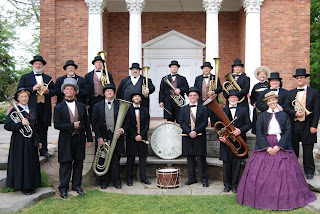Garden Rain - Toru Takemitsu
Toru Takemitsu (1930-1996) was a Japanese composer. He first heard Western art music when a military officer played a record for him and his fellow soldiers. After the war, in 1948, Takemitsu began studying composition with Kiyose. Takemitsu would remain largely self-taught in all things composition.
Takemitsu's greatest influences include Debussy and Messiaen. The timeless quality of their music can be heard in his music. Like them, he composed music with ambiguity: using modal melodies to mask the harmony for example. His 1957 Requiem caught the attention of Igor Stravinsky and this helped Takemitsu receive more recognition.
In 1964, he was invited to contribute to a series of lectures in Hawai'i by the East West Center. Another composer present, one who was a generation older than Takemitsu, was John Cage. The two exchanged many ideas but interestingly, Takemitsu was already employing some of Cage's most unique approaches: indeterminacy and graphic notation. What then would Takemitsu learn from Cage? An appreciation of the traditional instruments of Japan. At this point, sixteen years after beginning his studies with Kiyose, Takemitsu still effectively had his back turned towards the traditional music of Japan. Cage encourage embracing the unique sounds of traditional instruments and so Takemitsu would do so. He then incorporated the biwa and the shakuhachi into much of his music for the next thirty years. This helped him achieve more success and achieve more distinction. He could compose for film (over ninety film scores), radio, television and the concert hall stage.
In the 1970's, his music was characterized by an increasing departure from melody. In addition to composing, Takemitsu wrote many essays on the craft of composition, was a frequent lecturer on the subject and also was the recipient of many awards. Read more about him here.
Now, on to some of his music. Garden Rain is an impression of a serene scene. It was composed in 1974 and is for ten brass.
Joseph Stevenson provides the following note:
Garden Rain can be found on a few different albums:
 |
| Toru Takemitsu |
Takemitsu's greatest influences include Debussy and Messiaen. The timeless quality of their music can be heard in his music. Like them, he composed music with ambiguity: using modal melodies to mask the harmony for example. His 1957 Requiem caught the attention of Igor Stravinsky and this helped Takemitsu receive more recognition.
 |
| Toru Takemitsu |
 |
| Toru Takemitsu |
In the 1970's, his music was characterized by an increasing departure from melody. In addition to composing, Takemitsu wrote many essays on the craft of composition, was a frequent lecturer on the subject and also was the recipient of many awards. Read more about him here.
Now, on to some of his music. Garden Rain is an impression of a serene scene. It was composed in 1974 and is for ten brass.
Joseph Stevenson provides the following note:
Initially rejecting traditional Japanese music and aesthetics due to reaction against the militarism that resulted in the country's ruin in World War II, Toru Takemitsu found ways in his music to evoke the spareness and serenity of Japanese art, decoration, and garden design. He was especially fond of gardens, particularly the effects of water and weather on the aspect of them. "Garden Rain," therefore, is a highly typical work of this sort.
Lasting about seven minutes, it is a work for a double brass quintet, written for the London-based group the Philip Jones Brass Ensemble. They are asked to play not only quietly (which in brass can be very effective and poetic) but with a soft articulation, the opposite of the usual definite attack. The resonances are supposed to float in, like the soft-edged appearance of a garden in the rain. Takemitsu points out that the different elements in a Japanese garden can be perceived as existing in contrasting time-scales: The stones and sand have never grown, but the stones are fixed while the sand shifts over time. Trees, grasses, and flower have their own different life-spans, the rain moves quickly, but also alters the play of light on the grasses. Takemitsu gives the different brass players different time cycles, overlapping and forming new chords as the individual parts shift. The general effect is soft and impressionistic, even using some of the harmonic practice of Debussy and his school.
Garden Rain can be found on a few different albums:
- Modern Times with London Brass - Teldec - 46442
- Takemitsu: Garden Rain - Deutsche Grammophon - 477 5382GH


I must admit, I was not a fan of Takemitsu when I first heard him. I was initially put off by the minimalist quality of his music, which for brass players can be extremely daunting and can sound terrible even when performed well. However, after a few listens of this work as well as the two pieces I shared in class, I've come to appreciate his search for shade and color. It's not easy to write for brass in contemporary works, and honestly, I think he's moving in the right direction by just using ambient sound and clusters to great his soundscape rather than fast moving and overly textured chaos.
ReplyDelete